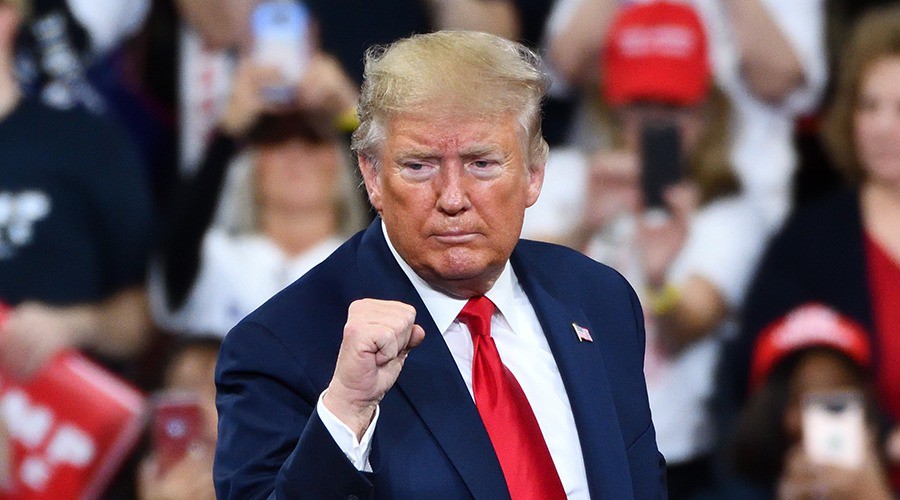The simmering trade conflict between the United States
and the European Union escalated sharply when President Donald Trump announced
plans to impose a 50% tariff on all EU goods entering the U.S. starting June 1,
alongside a potential 25% tariff on iPhones not made domestically.
The announcement came just hours before scheduled
trade negotiations, casting a shadow over talks and rattling markets on both
sides of the Atlantic.
Trump’s move marks a significant escalation from his
earlier announcement of a 20% tariff on EU products, which he temporarily
halved to 10% until early July to allow negotiations, the BBC reported.
An Unfolding Trade Standoff
The European Union, one of the United States’ largest
trading partners, has yet to issue a formal response to the tariff threat.
Analysts emphasize that, at this stage, the move remains a warning rather than
a formal policy change.
Still, the EU has signaled its resolve to stand firm
and maintain its course in the talks, with officials emphasizing a preference
for de-escalation while preparing to respond if necessary.
Global markets reacted swiftly to the renewed tariff
threat. U.S. stocks fell, with the S&P 500 declining about 1%, while major
European indexes such as Germany’s DAX and France’s CAC 40 dropped more than
1.5%.
Source: Google Finance
Apple shares, which had recently been exempted from
earlier tariff plans, opened over 2% lower amid the threat of a new 25% import
tax on iPhones made outside the U.S.
Since returning to the office, Trump has used tariffs to bolster U.S. manufacturing and protect domestic jobs. However, these
measures have repeatedly raised concerns worldwide about the potential to
increase costs and disrupt global supply chains.
Trade Deficit and Non-Monetary Barriers
Trump’s grievances focus heavily on what he sees as
unfair trade practices by the EU, particularly the persistent U.S. trade
deficit with the bloc.
Last year, the U.S. recorded a trade deficit of around
$236 billion with the EU, the BBC reported. EU officials have warned that they are prepared to retaliate if the talks collapse.
Earlier this month, the European Commission reportedly
unveiled plans for nearly $108 billion in counter-tariffs on a wide range of
American industrial and agricultural products.
President Trump has also singled out Apple as a
company he wants to see manufacturing more products within the U.S. Despite
meetings with CEO Tim Cook and recent shifts in production away from China,
Apple’s decision to move much of its assembly to countries like India and Vietnam
rather than the U.S. has drawn criticism.
Trump warned that a 25% tariff on iPhones made
overseas could come into effect if this trend continues.
The simmering trade conflict between the United States
and the European Union escalated sharply when President Donald Trump announced
plans to impose a 50% tariff on all EU goods entering the U.S. starting June 1,
alongside a potential 25% tariff on iPhones not made domestically.
The announcement came just hours before scheduled
trade negotiations, casting a shadow over talks and rattling markets on both
sides of the Atlantic.
Trump’s move marks a significant escalation from his
earlier announcement of a 20% tariff on EU products, which he temporarily
halved to 10% until early July to allow negotiations, the BBC reported.
An Unfolding Trade Standoff
The European Union, one of the United States’ largest
trading partners, has yet to issue a formal response to the tariff threat.
Analysts emphasize that, at this stage, the move remains a warning rather than
a formal policy change.
Still, the EU has signaled its resolve to stand firm
and maintain its course in the talks, with officials emphasizing a preference
for de-escalation while preparing to respond if necessary.
Global markets reacted swiftly to the renewed tariff
threat. U.S. stocks fell, with the S&P 500 declining about 1%, while major
European indexes such as Germany’s DAX and France’s CAC 40 dropped more than
1.5%.
Source: Google Finance
Apple shares, which had recently been exempted from
earlier tariff plans, opened over 2% lower amid the threat of a new 25% import
tax on iPhones made outside the U.S.
Since returning to the office, Trump has used tariffs to bolster U.S. manufacturing and protect domestic jobs. However, these
measures have repeatedly raised concerns worldwide about the potential to
increase costs and disrupt global supply chains.
Trade Deficit and Non-Monetary Barriers
Trump’s grievances focus heavily on what he sees as
unfair trade practices by the EU, particularly the persistent U.S. trade
deficit with the bloc.
Last year, the U.S. recorded a trade deficit of around
$236 billion with the EU, the BBC reported. EU officials have warned that they are prepared to retaliate if the talks collapse.
Earlier this month, the European Commission reportedly
unveiled plans for nearly $108 billion in counter-tariffs on a wide range of
American industrial and agricultural products.
President Trump has also singled out Apple as a
company he wants to see manufacturing more products within the U.S. Despite
meetings with CEO Tim Cook and recent shifts in production away from China,
Apple’s decision to move much of its assembly to countries like India and Vietnam
rather than the U.S. has drawn criticism.
Trump warned that a 25% tariff on iPhones made
overseas could come into effect if this trend continues.


